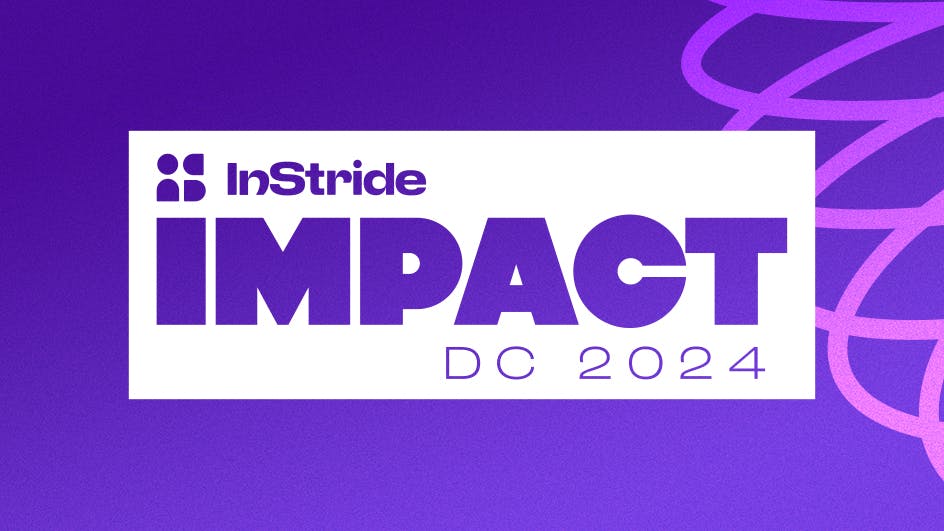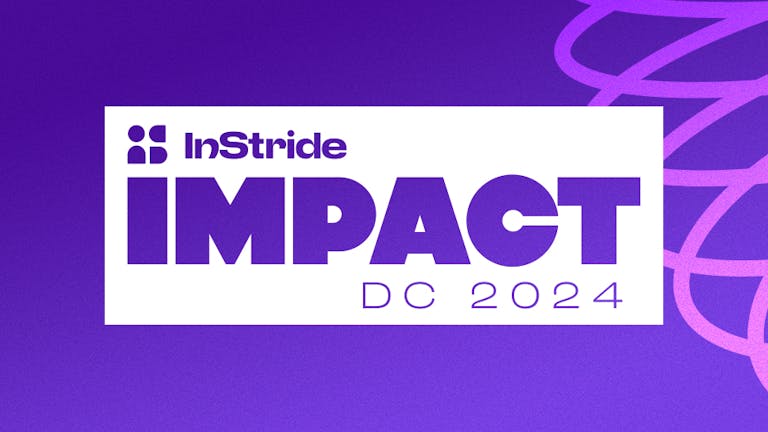InStride’s third annual IMPACT Summit took place in Washington, D.C. from May 20-22, 2024. Guided by this year’s theme – the power of partnerships – leaders across government, academia, healthcare and other industries convened to discuss how talent challenges can be addressed through workforce education.
While the conversations made clear the amount of work that’s needed to create lasting impact in the workforce, they also channeled the energy and excitement of all the people who had gathered to put their minds together and achieve this mission together.
Here’s a recap of 4 key takeaways that emerged from the summit.
#1 – The most in-demand skills for the future of work
It’s impossible to avoid the topic of technology – its adoption, its acceleration – in conversations about the future of work. Today, technology is evolving at breakneck speed, and figuring out how to prepare the workforce to adapt accordingly is of utmost importance.
As these questions inevitably came up at IMPACT, a couple of key insights emerged alongside them:
Learning agility
The most essential skill to empower today’s workforce for the future is learning agility.

Learning agility refers to the ability to learn and adapt to new contexts, challenges and technologies with flexibility and resilience. The pace at which technology is evolving is rapid, and the future holds more uncertainties than we can predict. The only way to prepare for this future is to equip workers with the agility to learn with, not in spite of, this change.
Plus, as technology evolves, new opportunities emerge. In the same way that Microsoft Excel made financial analysis accessible to more people, the hope is that generative AI can open doors for more people so that they can use technology to their advantage. Learning agility is the key to using tech advantageously.
Timeless vs. timely skills
The second insight to emerge from the conversation around technology is the shift toward timeless skills.
Instead of relying on the traditional binary of hard and soft skills, IMPACT attendees framed the conversation around timely and timeless skills. Timely skills can be taught in the short term to perform specific tasks, such as programming and language learning. On the other hand, timeless skills are durable and unique to the human experience and are trained over the long term, such as critical thinking, emotional intelligence and communication.
With the prevalence of machine learning and artificial intelligence today, the timeless skills that are uniquely human are irreplaceable. Instead of focusing on building timely skills that may end up being taken over by AI, it’s more strategic to prioritize timeless skills that can’t be replicated by technology.
#2 – Skills-based organizations are the new skills-based hiring
Skills-based hiring is trending. But recent conversations have questioned the value of a skills-based approach, especially when there aren’t robust company-wide recruiting, hiring and training initiatives in place to attract and retain these hires.
At IMPACT, a key topic of discussion revolved around the shift from skills-based hiring to creating a skills-based organization to make the benefits of this approach a reality.
A skills-based organization extends the skills-first approach to the entire organization, not just to the hiring process. Only when an organization is fully set up to support a workplace where skills matter more than degrees can a skills-first approach succeed over the long run.

#3 – The key to making learning irresistible is accessibility
A third key insight emerged in discussions about democratizing learning in a way that can be leveraged by all employees. IMPACT attendees broke down that accessibility into two levels:
Contextualized learning
First, a learning solution needs to be tailored to the context of a workplace and its workforce. When learning is relevant to the employee, not only are they more likely to see its value, but they’re also able to apply it to their daily work.

Democratized learning
A learning solution is accessible if it meets the learner where they’re at. Employees come from all kinds of educational backgrounds. If you build a learning solution for only one type of background, its impact will be limited.
For example, a learning solution built for a corporate employee working in middle management making $60,000 a year is likely not accessible to a frontline worker earning $12/hour. Frontline employees tend to face more barriers to learning, such as financial constraints and non-flexible work schedules.
Conversely, a learning solution designed for the frontline worker is likely also going to be accessible to the employee in middle management. Solutions designed with equity in mind enable more employees to take advantage of learning opportunities.
#4 - Upward mobility requires learning and education
Another takeaway that emerged at IMPACT was on the subject of education and upward mobility. Education doesn’t just build skills – it drives upward mobility in the workforce and has the potential to increase wages and standards of living.

The way to achieve this is to look at workers not for the job they’re currently doing, but for the job they could be doing.
Achieving this on a large scale requires understanding which jobs can serve as launch pads and magnets of opportunity for workers. Conversely, it requires understanding which jobs are career “cul-de-sacs,” or dead ends. Failure to address these dead ends inevitably leads to people leaving for other opportunities.
Partnering for a better future
The insights from this year’s IMPACT Summit highlight the power that academic institutions and corporations can have when they work together. The critical and weighty nature of each topic, and the potential to shape the workforce of the future, underscores the theme of the summit: the power of partnerships. Only by working together can we make change now to create a better tomorrow.
To learn more about InStride, connect with us today.

